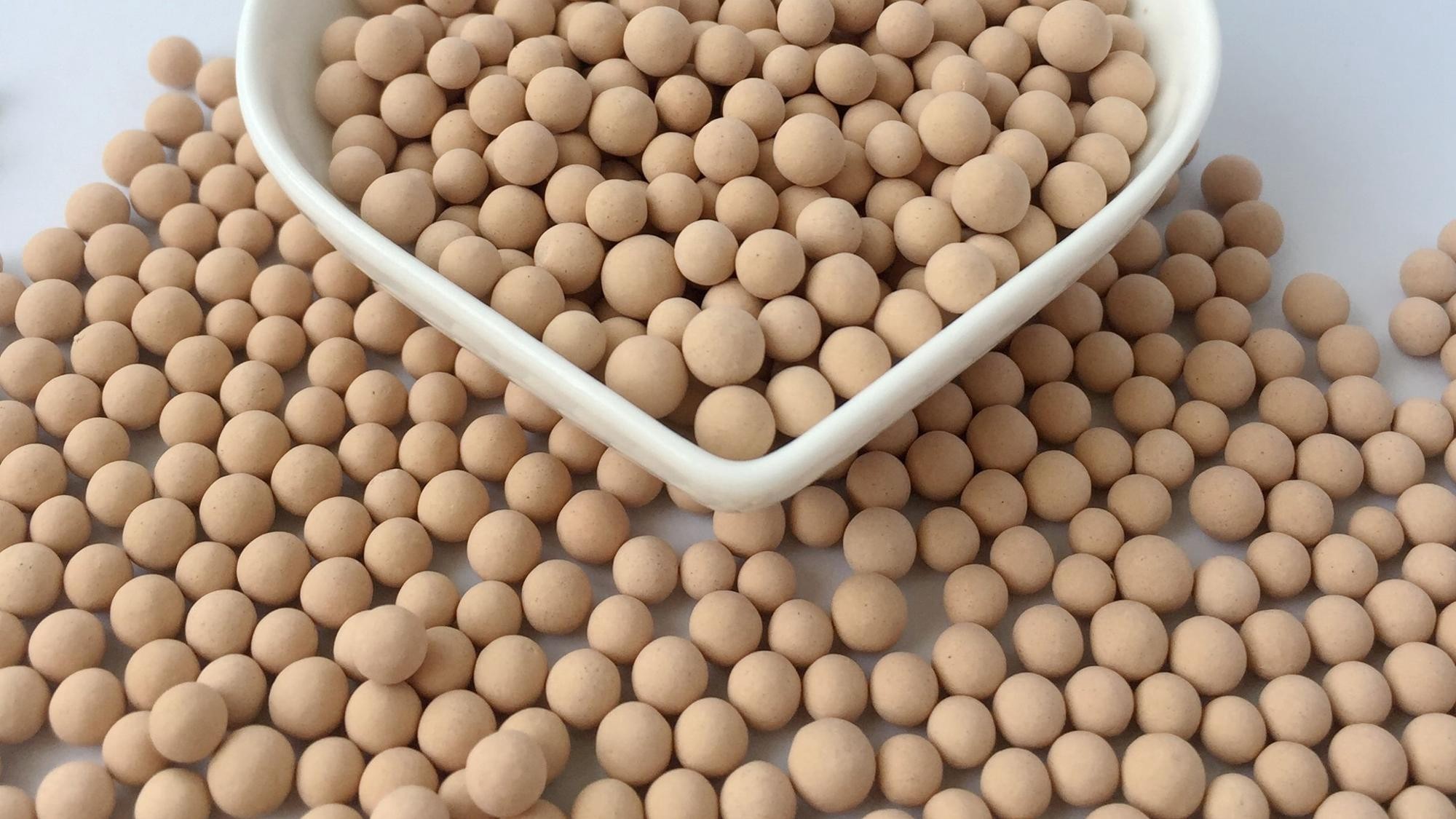
What is molecular sieve?
Molecular sieves are crystalline metal aluminosilicates having a three dimensional interconnecting network of silica and alumina tetrahedra. Natural water of hydration is removed from this network by heating to produce uniform cavities which selectively adsorb molecules of a specific size.
A 2.5-5 mm (4 x 8-mesh) sieve is normally used in gas phase applications, while the 1.6-2.6 mm (8 x 12-mesh) or even smaller type is common in liquid phase applications. The powder forms of the 3A, 4A, 5A and 13X sieves are suitable for specialized applications.
| Type | 3A |
| Composition | 0.6 K2O: 0.40 Na2O : 1 Al2O3 : 2.0 ± 0.1SiO2 : x H2O |
| Description | The 3A form is made by substituting potassium cations for the inherent sodium ions of the 4A structure, reducing the effective pore size to ~3Å, excluding diameter >3Å, e.g., ethane. |
| Major Applications | Commercial dehydration of unsaturated hydrocarbon streams, including cracked gas, propylene, butadiene, acetylene; drying polar liquids such as methanol and ethanol. Adsorption of molecules such as NH3 and H2O from a N2/H2 flow. Considered a general-purpose drying agent in polar and non polar media. |
| Type | 4A |
| Composition | 1 Na2O: 1 Al2O3: 2.0 ± 0.1 SiO2 : x H2O |
| Description | This sodium form represents the type A family of molecular sieves. Effective pore opening is 4Å, thus excluding molecules of effective diameter >4Å, e.g., propane. |
| Major Application | Preferred for static dehydration in closed liquid or gas systems, e.g., in packaging of drugs, electric components and perishable chemicals; water scavenging in printing and plastics systems and drying saturated hydrocarbon streams. Adsorbed species include SO2, CO2, H2S, C2H4, C2H6, and C3H6. Generally considered a universal drying agent in polar and non polar media. |
| Type | 5A |
| Composition | 0.80 CaO : 0.20 Na2O : 1 Al2O3: 2.0 ± 0.1 SiO2: x H2O |
| Description | Divalent calcium ions in place of sodium cations give apertures of ~5Å which exclude molecules of effective diameter >5Å, e.g., all 4-carbon rings, and iso-compounds. |
| Major Application | Separation of normal paraffins from branched-chain and cyclic hydrocarbons; removal of H2S, CO2 and mercaptans from natural gas. Molecules adsorbed include nC4H10, nC4H9OH, C3H8 to C22H46, and dichlorodifluoro-methane (Freon 12®). |
| Type | 13X |
| Composition | 1 Na2O: 1 Al2O3 : 2.8 ± 0.2 SiO2 : xH2O |
| Description | The sodium form represents the basic structure of the type X family, with an effective pore opening in the 910¼ range. Will not adsorb (C4F9)3N, for example. |
| Major Application | Commercial gas drying, air plant feed purification (simultaneous H2O and CO2 removal) and liquid hydrocarbon/natural gas sweetening (H2S and mercaptan removal). |

